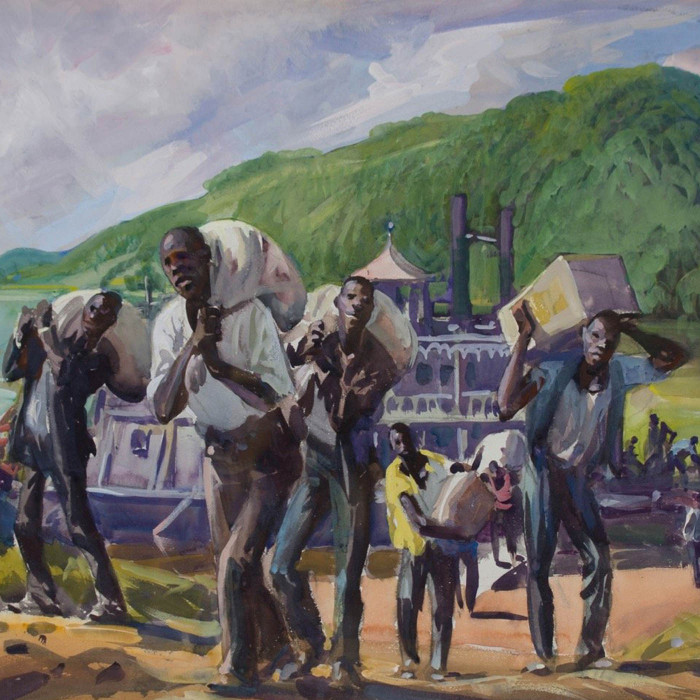
A century later WOLFS exhibits the works of one of the Cleveland School’s greatest artists - Frank N. Wilcox, known as “The Dean of Cleveland School Painters." This comprehensive exhibition will encompass over 200 works depicting American scene, Europe, the Northeast Coast and American west, spanning much of Wilcox’s remarkable career.
WOLFS is pleased to present “The Dean." This exhibition of paintings by Frank Nelson Wilcox (1887-1964) provides an opportunity to view fresh, perfectly preserved examples of remarkable work by one of the most highly regarded watercolorists of his generation.
Known as “the Dean of Artists,” Frank Wilcox, was a graduate of the Cleveland School of Art in 1910 and began his legendary teaching career at the Institute in 1913. As a student of Henry Keller, and a teacher to Charles Burchfield, Clarence Carter, Carl Gaertner, and Paul Travis, among others, Wilcox grew to become one of the foremost leaders in the development of the Cleveland School.
This exhibition includes the debut of his masterful modern watercolors from the 1920’s and 1930’s. Fortunately, these works were discovered while working with the Wilcox estate and the grandson of the artist. He provided us with uninhibited access to dusty boxes and cupboards filled with paintings and ephemera, until now, unseen for decades. The deep cobalt and shimmering emeralds Wilcox used in this group of seascapes and landscapes remain as vibrant as the day they were painted. In addition, the estate has shared a cache of dramatic early oils and stunning watercolors executed throughout Europe and North America.
The majority of the works in this exhibition were completed at a time when Wilcox was solely and intensely painting. Into the 1930’s, Wilcox began focusing on research for his first book, Ohio Indian Trails, a New York Times best seller, which led him towards a more historical and archaeological mindset. Prior to this shift in his attention, he was at a pinnacle in his artistic career. In a document in which he details great satisfaction with his methods in watercolor, he describes how he was painting, “light, weather and the sense of space…seen through the lightness and airiness of the watercolor technique.”
Wilcox recalls in his writings upon return from his first trip to Paris in 1911 that Keller, the Cleveland School’s most revered teacher and mentor, pushed Wilcox to express himself more Impressionistically. Although initially resistant, Wilcox began to find great value in Keller’s urgings - to be more intentional and deliberate in using pure color. In addition to the use of bold, pure colors, Wilcox began abandoning sketching and underdrawing. Instead, directly applying paint to paper, enhancing his personal artistic style of fluid line, striking composition, and vivid color.
In his autobiography, Wilcox further acknowledges that his first trips to Boothbay, Maine greatly benefited his artistic style. He notes that these works were “full in tone and not dependent upon a linear support” and that he “took great pleasure in directly molding the rock formations and contrasting them with fluid skies. In his numerous trips to Gaspé, Canada, Wilcox specified that he needed a “special palette” for the “extra blues and the contrasting keys of sky and earth.” Indeed, the dramatic and intense cool blues continue to triumph in these watercolors, which Wilcox never revealed to the public.
This comprehensive exhibition will encompass over 200 works depicting American scene, Europe, the Northeast Coast and American west, spanning much of Wilcox’s remarkable career.
Exhibition catalogs are available for $35 postpaid | call or email to request a copy 216-721-6945 info@wolfsgallery.com
